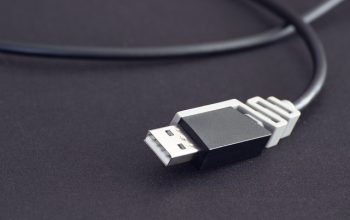Navigating the vehicle title transfer process can be a daunting task for many, particularly those unfamiliar with the intricacies of state-specific Department of Motor Vehicles (DMV) regulations. Whether you’re a first-time buyer or an experienced car owner, understanding DMV title transfer requirements, title transfer fees and costs variations, and the essential documents needed is crucial for a seamless transition of vehicle ownership. This article delves into the steps necessary to transfer a car title post-purchase, offering a comprehensive guide tailored to ensure compliance and efficiency across states. With a focus on state-specific considerations, we aim to equip you with the knowledge and tools, including a DMV title transfer checklist, to handle the transfer process confidently and avoid potential penalties or delays. Learn how to simplify the vehicle title transfer experience and make the most of your car ownership journey.
- Navigating the Vehicle Title Transfer Process
- Understanding DMV Title Transfer Requirements Across States
- Breaking Down Title Transfer Fees and Costs Variations
- Step-by-Step Guide on How to Transfer a Car Title Post-Purchase
- Essential Documents for a Smooth DMV Title Transfer
- State-Specific Considerations in the Title Transfer After Car Purchase
- Utilizing a DMV Title Transfer Checklist for Efficiency and Compliance
Navigating the Vehicle Title Transfer Process

Navigating the vehicle title transfer process can be a straightforward task when armed with the right information and resources. The DMV title transfer requirements vary from state to state, so it’s crucial to understand the specific guidelines that apply to your situation. Potential car owners should familiarize themselves with their state’s forms and procedures, which typically include submitting the appropriate application for a certificate of title, providing proof of ownership such as a bill of sale or purchase agreement, and presenting a valid driver’s license or identification. Additionally, one must comply with the title transfer fees and costs specific to their local DMV, which can encompass transfer taxes, title fees, and registration fees. These amounts may differ depending on the state and the vehicle in question. To expedite the process and avoid potential penalties or delays, especially when dealing with a used car purchase, it’s advisable to prepare all necessary documents ahead of time. A DMV title transfer checklist is an invaluable resource to ensure that no step is overlooked, from properly completing the application forms to paying the required fees and ensuring that all paperwork is correctly filled out and submitted. This meticulous preparation streamlines the process, allowing for a smoother transition of vehicle ownership and peace of mind for new car owners.
Understanding DMV Title Transfer Requirements Across States

Navigating the vehicle title transfer process can be daunting for new vehicle owners. Each state’s Department of Motor Vehicles (DMV) has its own set of rules, forms, and procedures that must be adhered to when transferring a car title. Prospective vehicle owners should familiarize themselves with the DMV title transfer requirements specific to their state to ensure a seamless transition of ownership. These requirements often include submitting the correct application form, providing proof of ownership, and presenting identification. Additionally, understanding the title transfer fees and costs associated with the process is crucial; these can differ significantly from one jurisdiction to another. For example, some states may charge a flat fee for title and registration services, while others base their costs on factors like vehicle value or weight. To expedite the transfer and avoid potential penalties or delays, it’s essential to gather all necessary documentation ahead of time. A comprehensive DMV title transfer checklist can serve as an invaluable resource, outlining each step of the process from preparing the required documents to submitting them to the appropriate state agency. Whether you’re transferring a title after purchasing a used car or new vehicle, adhering to these guidelines will facilitate a smoother transition and help ensure that all legal requirements are met.
Breaking Down Title Transfer Fees and Costs Variations

When navigating the vehicle title transfer process, one of the most variable components is the fee structure associated with transferring ownership. Title transfer fees and costs can fluctuate significantly from state to state, influencing the overall expense of the transaction. Prospective car owners should be prepared for these differences as they plan their purchase and subsequent title transfer after car purchase. Each state’s Department of Motor Vehicles (DMV) sets its own fees, which may include filing fees, title transfer fees, and even additional taxes or charges based on the vehicle’s make, model, and age. To ensure a seamless transfer, it’s crucial to research the specific DMV title transfer requirements for the state in question. These can typically be found on the state’s DMV website or by contacting the DMV office directly. The process generally involves submitting the correct application form, providing proof of ownership, and possibly undergoing a vehicle inspection. By utilizing a comprehensive checklist tailored to your state’s requirements, you can streamline the title transfer, minimize potential delays, and avoid any penalties that might arise from an incomplete or incorrectly filed transfer. Whether you’re buying a new car or a used one, understanding the title transfer fees and costs in advance is key to a successful transaction and maintaining compliance with state regulations.
Step-by-Step Guide on How to Transfer a Car Title Post-Purchase

Navigating the vehicle title transfer process can be streamlined with the right information and preparation. After completing a private party or dealership purchase, initiating the DMV title transfer is a critical step to ensure legal ownership of your new vehicle. The process begins with promptly notifying the Department of Motor Vehicles (DMV) in your state, as failure to do so within the mandated timeframe can result in penalties. To proceed with the DMV title transfer requirements, you must submit the appropriate forms, which are often available online for download or can be requested at your local DMV office. These forms typically request information such as the vehicle’s identification number (VIN), seller and buyer details, and odometer reading if applicable.
In addition to the paperwork, title transfer fees and costs must be paid. These vary depending on the state and can include a transfer tax or titling fee. It’s important to familiarize yourself with these Title transfer fees and costs beforehand to avoid any unexpected expenses. The specific amount is usually based on the vehicle’s value, age, or weight. Once all paperwork and associated fees are submitted, the DMV will process your application. This typically involves a review of the documents for accuracy and completeness. Upon approval, the new title will be issued in your name, and you should receive it by mail within a specified timeframe. To ensure a smooth transfer and avoid potential delays, it’s advisable to gather all necessary documentation ahead of time, including proof of insurance, vehicle inspection certificates if required, and identification. Utilizing a DMV title transfer checklist can help you stay organized and complete each step efficiently, making the transition from seller to buyer both legal and official.
Essential Documents for a Smooth DMV Title Transfer

When embarking on the vehicle title transfer process, having all the necessary documents assembled is paramount to ensure a smooth experience at the DMV. The DMV title transfer requirements typically include the current title or proof of ownership, which must be provided for the transfer after car purchase. This document should reflect the seller’s name and information, as well as the vehicle’s details. Additionally, a valid government-issued photo ID is usually required to verify the identity of both the buyer and seller. If the title is not already in the new owner’s name, an application for a certificate of title must be completed; this form may vary by state but is essential for initiating the transfer process.
Title transfer fees and costs are jurisdiction-specific and can include application fees, transfer taxes, and registration fees. It’s advisable to research these ahead of time to avoid any surprises. Proof of vehicle sale price is another critical document, which may be evidenced by a bill of sale or sales contract that outlines the transaction details. If applicable, evidence of insurance coverage for the vehicle must also be presented. Lastly, be prepared with any lienholder information if there is an existing loan on the vehicle. Ensuring all these documents are in order before visiting the DMV will facilitate a swift and efficient title transfer process.
State-Specific Considerations in the Title Transfer After Car Purchase

When purchasing a vehicle, understanding the state-specific considerations in the title transfer process is crucial for a seamless transition of ownership. Each state’s Department of Motor Vehicles (DMV) has its own set of rules and forms that must be adhered to when transferring a vehicle title post-purchase. The DMV title transfer requirements can include various documents, such as proof of purchase, the current vehicle title, odometer disclosure statements, and identification. It’s imperative to research these state-specific mandates ahead of time to avoid any delays or issues upon sale completion.
Navigating the vehicle title transfer process also involves understanding the title transfer fees and costs associated with the transaction. These can fluctuate significantly from one state to another. While some states may have minimal charges, others might impose a higher fee structure that could include registration taxes, title processing fees, and additional documentary stamps or handling charges. To expedite the transfer and ensure compliance with local regulations, it’s advisable to utilize a DMV title transfer checklist tailored to your state’s particularities. This checklist will guide you through the necessary steps, required documentation, and fee information, making the process of transferring a car title after a car purchase less daunting and more efficient.
Utilizing a DMV Title Transfer Checklist for Efficiency and Compliance

Navigating the vehicle title transfer process can be streamlined with the aid of a comprehensive DMV title transfer checklist. This indispensable resource outlines each critical step, from gathering necessary documentation to understanding the specific DMV title transfer requirements for your state. It ensures that you have all the requisite items, such as proof of ownership, liability insurance, and identification, before proceeding with the transfer. By following a checklist, you can avoid oversights that might cause delays or necessitate additional visits to the DMV. The checklist typically includes a detailed list of documents, step-by-step instructions on how to complete the process, and an overview of title transfer fees and costs associated with your transaction. This financial clarity is crucial, as these fees can vary significantly from one state to another, ensuring that you are prepared for all expenses prior to initiating the transfer. With a checklist in hand, the process of transferring a car title after a car purchase becomes more predictable and less daunting, allowing first-time buyers and seasoned vehicle owners alike to handle the transaction with confidence and efficiency.
Navigating the vehicle title transfer process can be daunting for new vehicle owners. This article demystified the steps involved by outlining DMV title transfer requirements, which vary across states, and delved into the nuances of title transfer fees and costs that differ from one location to another. By following a comprehensive guide on how to transfer a car title post-purchase and ensuring all essential documents are in order, individuals can streamline this procedure, thus avoiding potential penalties or delays. Employing a DMV title transfer checklist is instrumental for achieving efficiency and compliance throughout the process. Understanding these key aspects of the title transfer after car purchase equips owners with the knowledge necessary to handle this transaction confidently and correctly.



